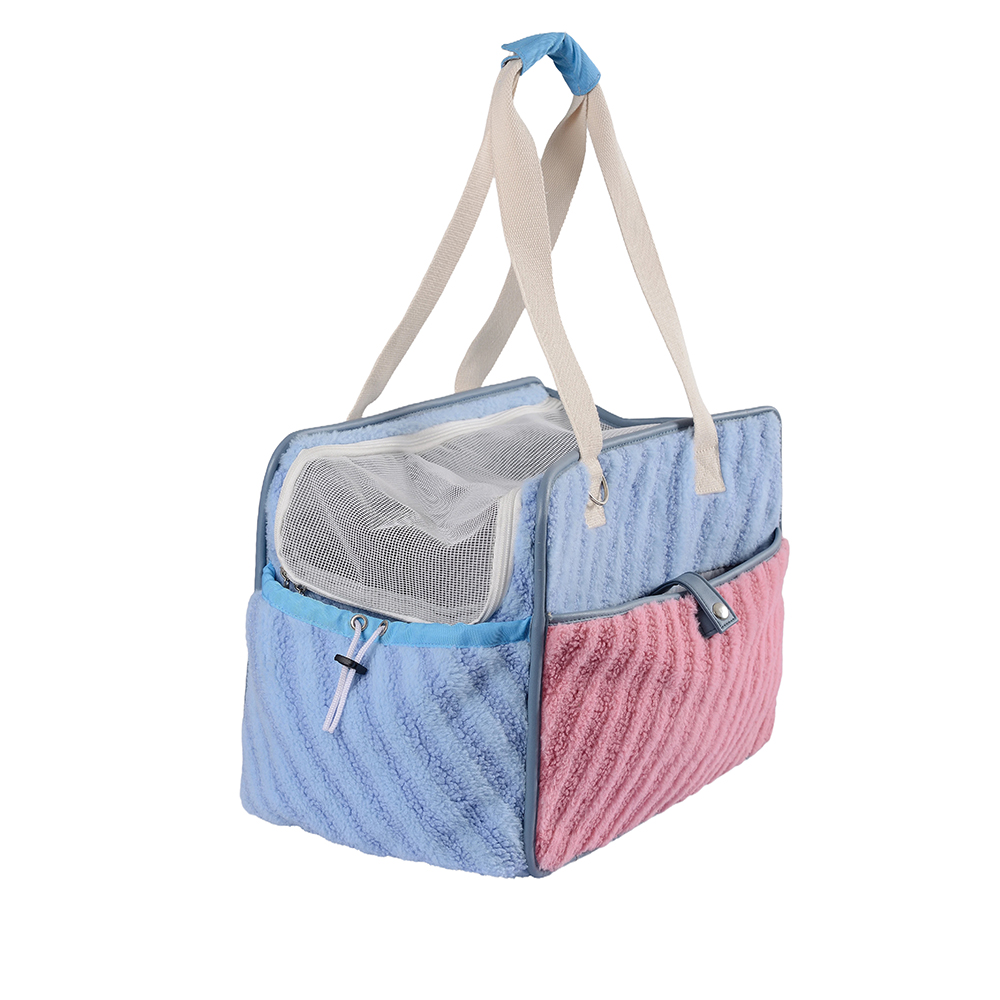Understanding Pet Carrier Bags
A pet carrier bag is an essential accessory for pet owners who travel frequently with their cats or dogs. It provides a secure and comfortable space for your pet, ensuring safety during transport. Selecting the right carrier bag is crucial for the well-being of your pet, whether you're going on short car trips, visiting the veterinarian, or flying. The wrong carrier can cause stress, discomfort, or even injury to your pet.
Types of Pet Carrier Bags
Pet carrier bags come in various styles, each offering different benefits. Understanding these types helps in choosing the most suitable bag for your pet's needs.
Soft-Sided Carrier Bags
Soft-sided carriers are lightweight, flexible, and easy to carry. They usually feature mesh panels for ventilation and visibility, making them ideal for short trips or air travel. They are also collapsible, which saves storage space when not in use.
Hard-Sided Carrier Bags
Hard-sided carriers provide maximum protection and durability. They are sturdy, often made from strong plastics, and suitable for pets that may chew or scratch. These carriers are preferred for longer journeys or for pets that need a more secure enclosure.
Backpack-Style Carrier Bags
Backpack carriers allow hands-free travel and are perfect for pet owners who walk or hike. These carriers often have padded straps and multiple ventilation panels to ensure comfort for both the pet and the owner.
Rolling or Wheeled Carrier Bags
Wheeled carriers are convenient for longer trips through airports or train stations. They reduce strain on the owner and are suitable for heavier pets. Some models combine wheels with shoulder straps for versatile transport options.

Size and Weight Considerations
Choosing the right size carrier is critical for your pet’s comfort. A carrier that is too small can cause stress and restrict movement, while a carrier that is too large may be difficult to handle. Measure your pet's height, length, and weight, and compare it with the carrier dimensions to ensure a proper fit. Consider also the weight of the carrier itself, especially for soft-sided or wheeled bags, to ensure ease of transport.
Guidelines for Different Pet Sizes
- Small cats and dogs (up to 10 lbs): Lightweight, soft-sided carriers or backpacks.
- Medium pets (10-25 lbs): Medium soft-sided carriers with reinforced structure or hard-sided carriers.
- Large pets (25+ lbs): Rolling or wheeled carriers, or hard-sided carriers with sturdy handles.
Comfort and Safety Features
A comfortable pet carrier bag should provide adequate ventilation, padding, and security. Safety features protect pets during transport, while comfort features reduce anxiety and allow them to relax.
Ventilation and Visibility
Look for carriers with mesh panels on multiple sides to allow airflow and visibility. Pets can see their surroundings, which helps reduce stress and keeps them cool during travel.
Padding and Support
Internal padding provides comfort and absorbs shocks during movement. Removable, washable padding is ideal for maintaining hygiene. Padded straps on backpack-style carriers reduce strain on the owner and provide a smoother ride for the pet.
Security Features
Ensure the carrier has secure zippers, locks, or clips to prevent pets from escaping. Many carriers also include safety leash attachments inside to keep pets tethered safely. Hard-sided carriers should have sturdy latches to withstand bumps or accidental drops.
Travel-Specific Considerations
Depending on the type of travel, different carriers may be more suitable. Air travel, car trips, and public transport each have unique requirements that influence the choice of carrier bag.
Air Travel
For airline travel, carriers must comply with airline regulations regarding size, ventilation, and materials. Soft-sided carriers that fit under the seat are usually required for cabin travel. Check the airline’s weight limits and approved materials before purchasing.
Car Travel
During car travel, stability and ease of cleaning are essential. Soft-sided carriers that fit securely in the back seat or hard-sided carriers strapped with seatbelts are recommended. Anti-slip mats and cushioned padding enhance comfort and safety.
Public Transport
When using buses, trains, or subways, lightweight and portable carriers are ideal. Backpacks or compact soft-sided bags allow hands-free movement and compliance with transport regulations.
Material and Durability
The material of a pet carrier bag affects its durability, comfort, and ease of cleaning. High-quality nylon, polyester, and durable plastics are commonly used. Look for water-resistant fabrics and reinforced stitching to ensure the bag lasts through frequent use and travel.
Maintenance and Hygiene
Regular cleaning is crucial to keep the carrier hygienic. Removable and washable pads, machine-washable fabric covers, and wipeable surfaces help maintain cleanliness. Proper maintenance also extends the carrier’s lifespan and prevents odors or bacterial buildup.
Conclusion: Making the Right Choice
Selecting the right pet carrier bag for your cat or dog requires careful consideration of size, type, comfort, safety, and travel requirements. A well-chosen carrier ensures your pet’s safety and comfort while making travel convenient for you. By evaluating your pet’s size, temperament, and the type of travel, you can find a carrier that combines durability, convenience, and style, providing stress-free journeys for both you and your beloved pet.




 Español
Español











